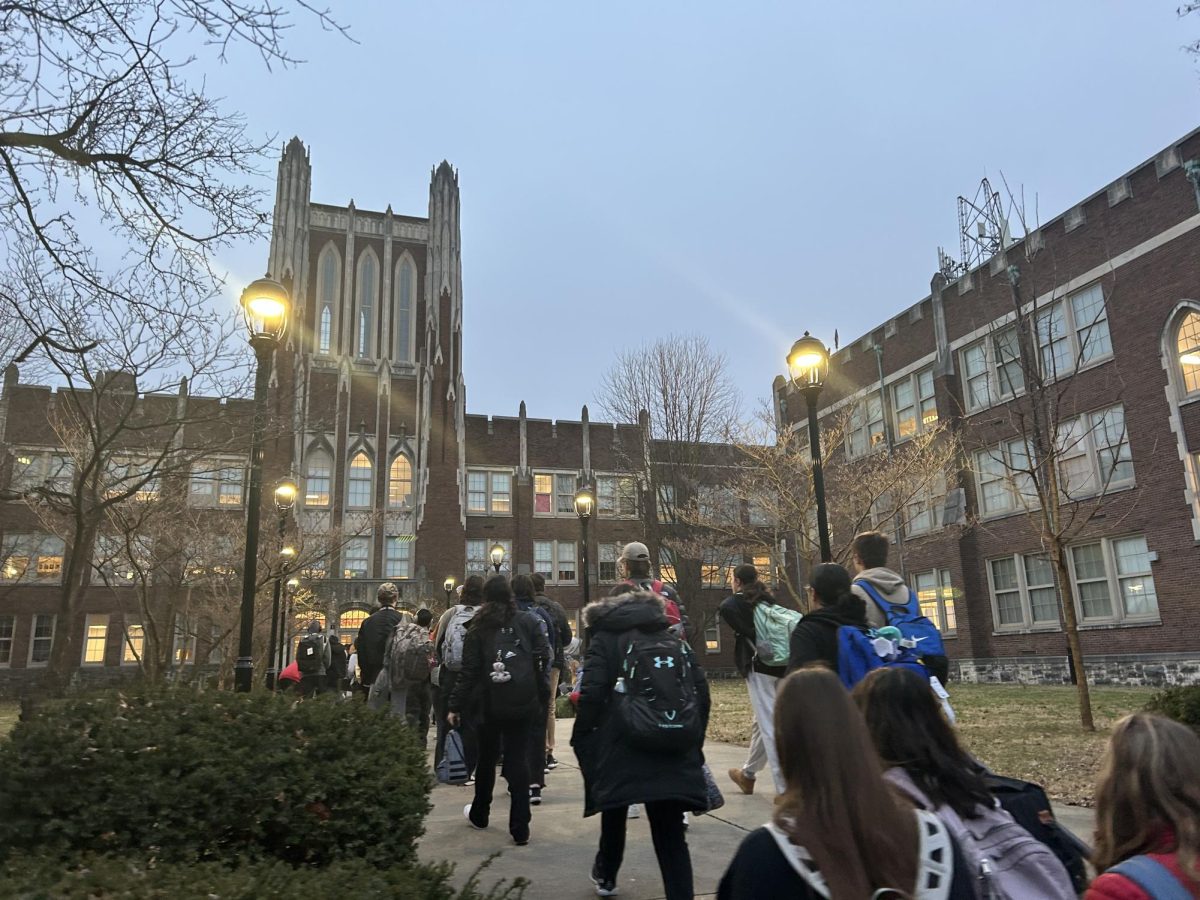
Beginning April 13, all teachers must confirm at the beginning of each block that all students are wearing their IDs and are in dress code. An email went out to the faculty on April 1 that described the protocol for each block:
[quote_box_center]- Take attendance in Infinite Campus
- Visually verify that each student is wearing and/or displaying her/his student ID
- Visually verify that each student is in dress code
- Write a referral for any student(s) without and ID and/or not in dress code.
The administration also announced that they would be performing random spot checks throughout the day. Through these measures, Mr. Greg Kuhn (Assistant Principal) explained in an email that “as the students realize the days of ‘don’t be seen by an administrator and you’re fine’ are over… violations will dwindle.”
Any student receiving a referral on these grounds will receive a “pink” copy that can serve as a notice for the rest of the day that he or she has already been disciplined.
Additionally, administrators will be following up with teachers on any discrepancies found in enforcement.
Students must follow all guidelines posted in the agenda on page 10. As a reminder, this is what was also described as part of the dress code in an email from the administration:
[quote_box_center]Yoga/stretch pants can be worn as long as there is a shirt long enough to cover the, here it comes, buttocks (when the student is standing normally).
Tying a jacket/sweatshirt around the waist does NOT count as ‘being covered.’
Shorts must be long enough to equal, or surpass, fingertip length at both the front and back of a skirt or pair of shorts (when the student is standing normally).
[/quote_box_center]Some teachers regard these changes as a step in the right direction.
“I’m a rule follower. I don’t have a problem with this policy as long as rules are equitably applied,” Ms. Connie Wilcox (Humanities) said. “I’ve felt like the bad guy in the past because I was enforcing rules that other teachers weren’t.”
Others raise concerns over the way the administration is handling the situation.
“This is to tell me that the administration asks teachers not to put them in a position of having to enforce the enforcement,” Ms. Betsey Bell (English) said. “Isn’t that their job? Are they not going to be looking for people in the hallways?”
But as other teachers stated, Ms. Bell agrees that the stricter implementation is necessary.
“Here’s the thing, I cannot believe that students do not have the good sense to follow the dress code. We’re not asking a lot of you people. We’re asking you to dress appropriately for an educational setting,” Ms. Bell said. “As far as asking me to enforce this rule, I have no problem with it at all. I read the rules, I enforce rules, and I know that there’s a justifiable frustration on the part of the administrators and faculty that does enforce rules.”






Sterling Richmond • Apr 16, 2015 at 9:11 pm
Surely the imposition of a dress code is reasonable, no one contests that (though many take issue with various provisions), but this policy is disproportionate in the extreme and is a solution to a very very minor problem that dilutes resources and time that could be used elsewhere. Forcing universal application of disciplinary referrals for such minor offenses is, in Deirdre’s words, generally appalling. If anything, it is counterproductive; it devalues referrals as a measure to deter significant violations. If you’re applying a punishment that was previously reserved for higher-level disciplinary violations to dress code and ID policy violations, enforcing those more important violations will become harder. That’s why we don’t apply life sentences over traffic violations and petty theft.
You should also be mindful of the fact that the administration has just unwittingly expended a great deal of political capital on this new policy; this is tremendously (if not universally) unpopular with students and parents, and pressure is going to build on you in the medium term to make concessions. The student body’s perception of the administration at the moment, rightfully or not, is that it is categorically incompetent, out of touch with real issues, and overly concerned with trivial matters.
We’re not your constituents and your job isn’t to please us, but we do expect you to run the school properly, and if the student body loses confidence in your ability to do that you will most definitely feel the consequences later on.
Greg Kuhn • Apr 15, 2015 at 9:12 am
The dress code is the dress code. No one will ever be forced to wear clothing that violates the dress code, right? Wearing clothing that is not in compliance with the dress code is a student’s decision.
And, in all fairness, no one will ever be forced to attend Manual either.
Manual’s policies give a significant amount of leeway and freedom to students, which is appropriate for many reasons.
Adherence to a dress code (rather than a uniform policy) is a minor, and valid, expectation – especially when compared to the freedom and opportunities a Manual student is afforded.
Deirdre Seim • Apr 4, 2015 at 2:42 pm
Given the days lost to weather and the need to use the school days left to prepare for AP exams and finals, I am appalled that even one minute of class time will be used for this nonsense. Dress code violations egregious enough to cause a disruption are surely already noticed and dealt with. Wasting the time of teachers and students checking strap widths and shorts lengths is both foolish and frustrating to those of us who expect the administration to be focused on rational priorities.